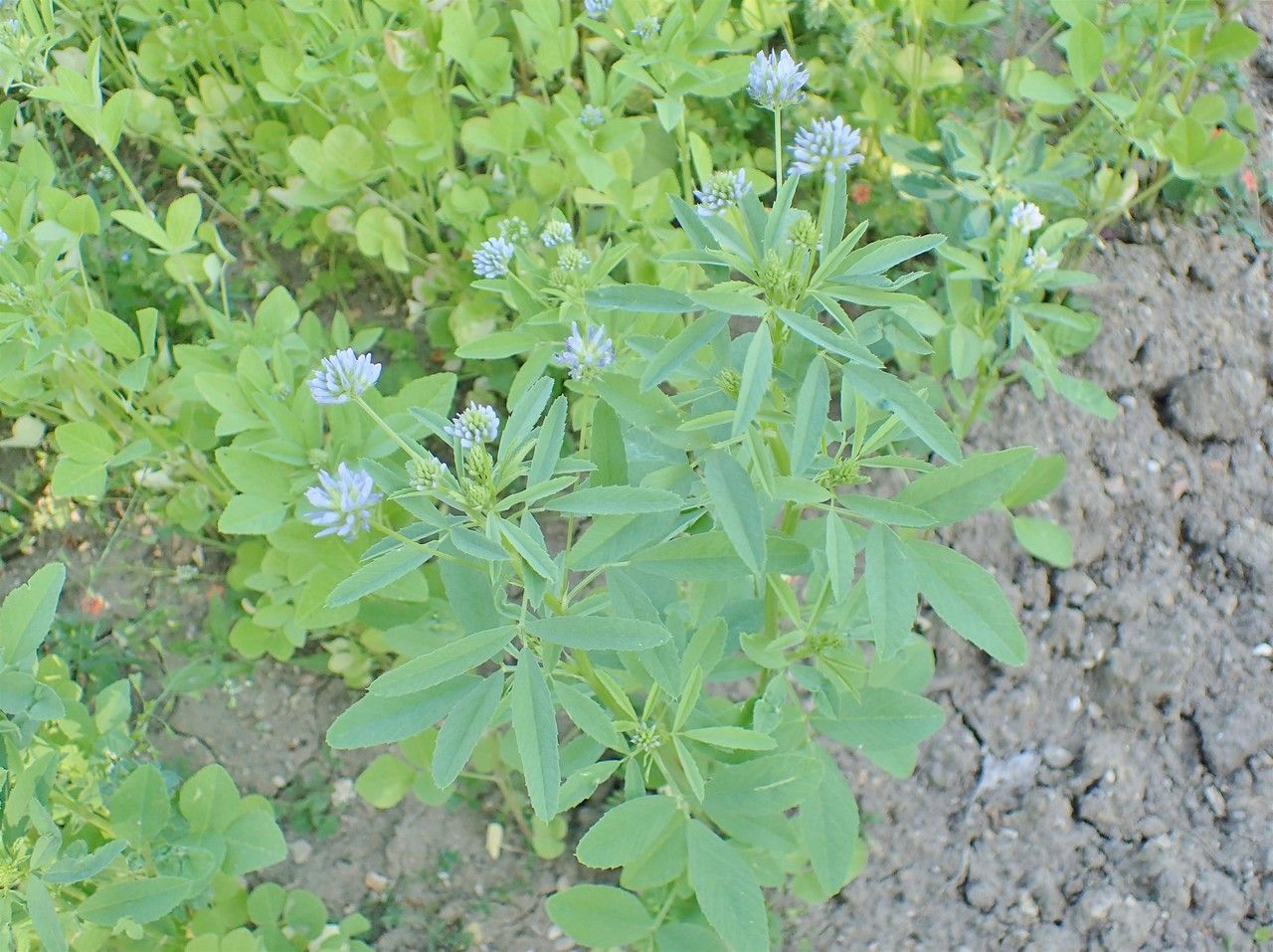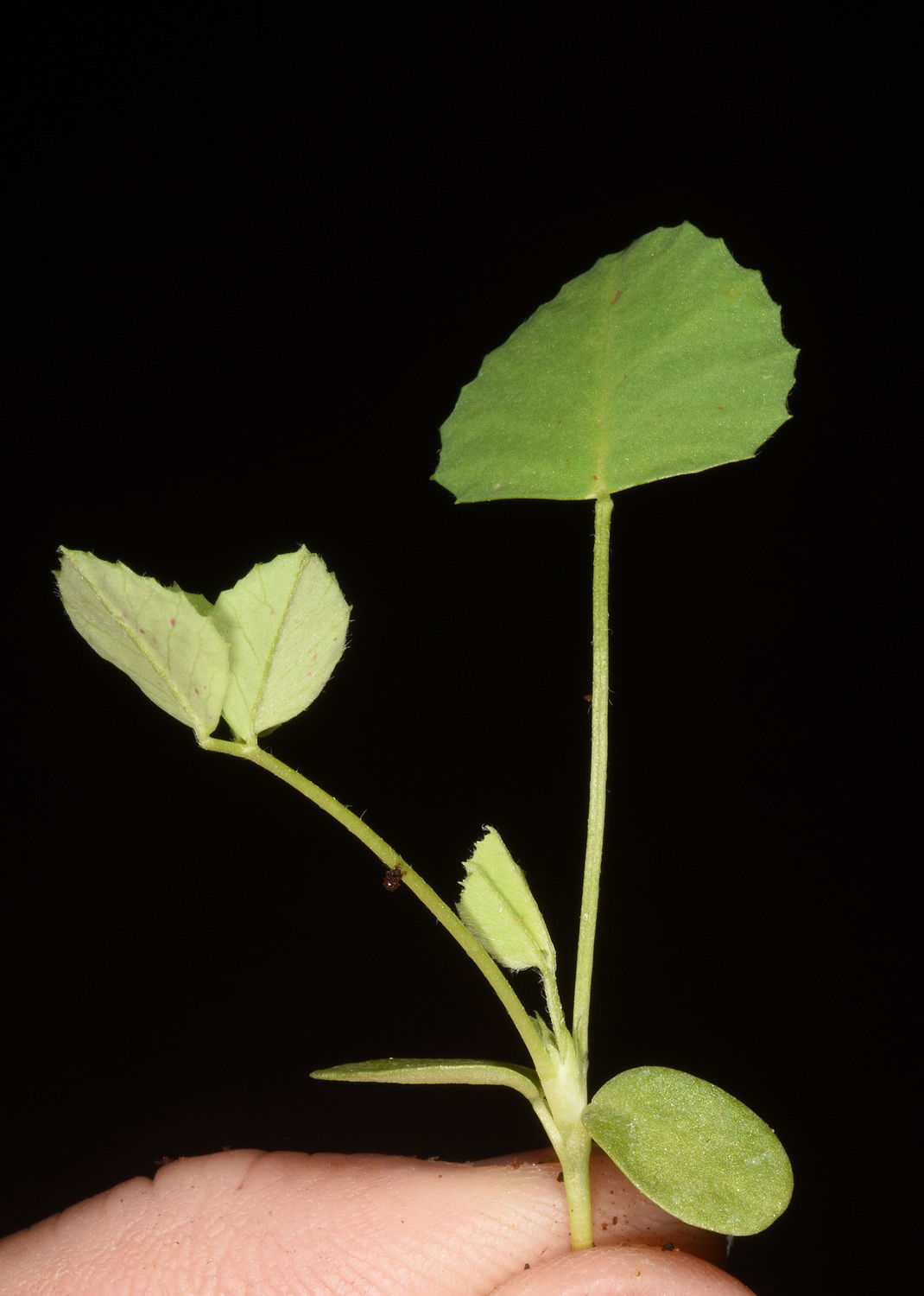Blue fenugreek
trigonella caerulea
Also known as: ["Greek hay","blue fenugreek"]
Overview
A herbaceous plant in the Fabaceae family, known for its blue-green leaves and aromatic seeds.
Benefits & Perks
["culinary herb","fragrant flowers","medicinal use"]
Botanical Classification
| Phylum: | Magnoliophyta |
| Class: | Magnoliopsida |
| Order: | Fabales |
| Family: | Fabaceae |
| Genus: | Trigonella |
| Botanical Name: | Trigonella caerulea |
Plant Characteristics
Basic Information
- Category: Herbs & Weeds
- Suitable Location: outdoor garden bed in temperate climates
- Suitable For:
- Is Weed: No
- Allergenicity: low
Environmental Needs
- Climate: {"temperatureRange":"5–30°C"}
- Hardiness: {"zones":"4–9"}
- Misting: rarely required
- Drainage: Fast-draining to prevent root rot.
- Soil Type: Well-draining, loamy soil with added organic matter; can tolerate poor soils but thrives with enrichment.
Maintenance Level
- Maintenance Level: moderate
- Toughness Level: moderate
- Pruning Frequency: As needed; lightly prune after flowering or in early spring.
- Pruning Intensity: Light to moderate; avoid heavy pruning unless necessary to control size.
Care Details
Ideal Sunlight Coverage:
Full sun (6–8 hours/day); tolerates partial shade but may produce fewer flowers.
Sunlight Tolerance Tips:
Acclimate gradually to intense sunlight; protect from harsh afternoon sun in hot climates; ensure good air circulation to prevent fungal issues.
Care Requirements
Care Difficulty
easymoderate
Sunlight
full sun to partial shade
Rotate plant for even light exposure; use sheer curtains to filter intense sun; avoid placing near heat sources.
Watering
every 7–10 days during active growth, reduce in winter
Water thoroughly but infrequently; ensure soil dries between waterings; avoid wetting foliage.
Soil
well-drained, sandy loam with moderate fertility
pH: Slightly alkaline to neutral (pH 6.5–7.5).
Ensure pots have drainage holes; avoid overwatering; top-dress with compost annually.
Temperature
Prefers cool to moderate temperatures (60–75°F/15–24°C); can tolerate light frost but not prolonged cold.
Avoid sudden temperature changes; protect from drafts; maintain consistent indoor temperatures.
Fertilizing
every 4–6 weeks during growing season
Fertilize only when actively growing; flush soil occasionally to prevent salt buildup; use organic options for gentle feeding.
Propagation
Methods
Seed propagation is most common; stem cuttings can also be used for some varieties.
Step-by-Step Propagation Guide
- Prepare medium.
- Sow seeds or take cuttings.
- Maintain moisture and warmth.
- Transplant once rooted.
Best Time: Spring or early summer when the plant is actively growing.
Environment
Warm (70–75°F/21–24°C), high humidity (60–70%), and bright indirect light.
Medium
Well-draining seed starting mix or cactus mix with perlite.
Hormone
Not typically required for seeds; rooting hormone can help with stem cuttings.
Timeline
Seeds germinate in 1–3 weeks; cuttings root in 2–4 weeks and establish in 2–3 months.
Tools Needed
Seed trays, rooting hormone, misting bottle, heat mat (optional).
Quick Tips
Keep soil consistently moist but not waterlogged; provide bottom heat for faster germination; thin seedlings as needed.
Pruning & Repotting
Pruning Guide
Method
Pinch back tips to encourage branching; trim stems just above a leaf node.
Pruning Plan
Light pruning to maintain shape and encourage bushier growth; remove dead or damaged stems as needed.
Tools
Pruning shears, sharp scissors, or your fingers for small stems.
Checklist
Sterilize tools; prune dead/damaged growth; shape plant; clean up debris.
Repotting Guide
Best Season
Early spring before new growth begins.
Pot Size
Choose a pot 1–2 inches larger in diameter than the current one.
Method
Remove plant gently; trim roots if crowded; place in new pot with fresh soil; water lightly.
Suggestions
Repot every 2–3 years or when roots fill the pot; beneficial for container-grown plants to refresh soil.
Checklist
Select new pot; prepare fresh soil; handle roots carefully; water after repotting.
Advanced Care Tips
Watering Mastery
Watering Checklist
Check soil moisture; water deeply; ensure drainage; avoid wetting leaves.
How to Apply Water Properly
Water at the base of the plant, ensuring even moisture reaches the root zone; allow excess water to drain away; water in the morning to reduce evaporation.
Watering Schedule Tips
Water deeply once the top inch of soil feels dry; reduce frequency in winter to prevent root rot.
Soil Improvement
Add compost or well-rotted manure for fertility; mix in perlite or sand for drainage; avoid heavy clay soils.
Temperature Stress Management
Signs of Temperature Issues
Yellowing leaves (cold stress); wilting or leaf drop (heat stress); stunted growth.
Cold Stress
Slows growth; may cause leaf discoloration; roots can become waterlogged in cold, wet soil.
Solution: Move to a warmer location; provide frost protection if outdoors; ensure soil drains well to prevent cold root damage.
Hot Stress
Leaves may wilt, scorch, or drop; growth may slow; flowers may fail to set.
Solution: Provide shade during peak heat; increase humidity; water deeply but avoid overwatering.
Fertilizing Guide
Fertilizing Checklist
Check growth phase; dilute fertilizer; apply to moist soil; avoid contact with leaves.
Fertilizing Method
Use balanced liquid fertilizer diluted to half strength every 4–6 weeks during growing season; avoid fertilizing in winter.
Common Problems & Solutions
Toxicity Warning
Cats
Non-toxicBlue fenugreek is not considered toxic to cats. The plant lacks compounds that are known to be harmful to felines, and ingestion is generally safe.
🌿 Toxic Parts:
⚡ Toxic If:
if eaten
Dogs
Non-toxicBlue fenugreek is not considered toxic to dogs. The plant does not contain known compounds that are harmful to canines, and ingestion typically does not result in adverse effects.
🌿 Toxic Parts:
⚡ Toxic If:
if eaten
Humans
Slightly ToxicTrigonella caerulea, commonly known as blue fenugreek, contains coumarin derivatives and other compounds that can cause mild gastrointestinal distress when consumed in large amounts. The plant is generally considered safe in culinary uses but may pose risks in excessive intake.
⚠️ Symptoms:
🌿 Toxic Parts:
⚡ Toxic If:
if eaten in large quantities
Frequently Asked Questions
Q: Is Blue fenugreek safe for pets?
A: Yes, it is non-toxic to dogs and cats.
Q: What are the culinary uses of Blue fenugreek?
A: It is used in traditional dishes, particularly in Balkan and Central Asian cuisines, for its aromatic seeds.
Q: How should Blue fenugreek be cared for?
A: It requires moderate maintenance, including well-drained soil and full sun to partial shade.
Quick Reference
| Family: | Fabaceae |
| Care: | easy |
| Light: | full sun to partial shade |
| Water: | every 7–10 days during activ |
Get Expert Care Tips
Download the Plantious app for personalized care reminders and plant identification!
Google Play App Store







